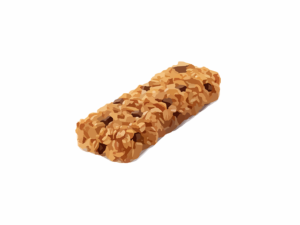1,2,3,.. And You Are All Set For Healthy Skin!

Healthy, glowing and bright skin is not just about having a DNA; instead, it’s about your lifestyle, healthy skin care habits and your positive attitude toward the skin. Not just that these traits make you feel good, it also put a great impact on how you see yourself.
So, stop throwing the tantrums saying, “Why, God why I haven’t asked for much!” have a look at the four easy steps how you can have a healthy skin:
Clean, Clean And Cleanse:
Cleansing will help make your skin oil-free, dust and sweat-free that got stuck on your skin throughout the day. Make a habit of doing it throughout the day and night and make your skin feel fresh. Make sure you chose cleanser according to your skin type.
While applying, move hands in circular motion to avoid wrinkles. Also, keep your hands clean before applying cleanser on the face and make sure it doesn’t have any acne. If there are any, have an acne treatment to prevent skin from damaging.
Tone It Out!
Of course, you might think of toning as an unnecessary step; it offers many benefits on the skin. Also, skin toning will make your skin absorb moisturizer. It also minimizes the appearance of open pores.
So, pick the one according to the skin type as there are many toners who offer anticipatory effects with others having Ph balance factors. After cleansing, apply them with a cotton ball.
In addition, if you are using tonner for the first time, pick a mild one or do a patch test to check if it suits you. Don’t go for the citrus based toners or the one having alcohol.
Eat a healthy diet
Eating a healthy diet is important for overall health, including the health of your skin.
The foods we eat provide the essential vitamins, minerals, and other nutrients necessary for the body to function optimally. When it comes to skin health, certain nutrients play an especially important role:
- Antioxidants: Antioxidants are substances that protect cells from damage caused by free radicals, which can contribute to aging and disease. Eating a diet rich in antioxidants can help protect the skin from damage caused by the environment and promote healthy aging. Immunity booster foods that are high in antioxidants include berries, leafy greens, nuts, and dark chocolate.
- Omega-3 fatty acids: Omega-3 fatty acids are essential fats that are crucial for overall health, including skin health. They help keep the skin hydrated, reduce inflammation, and protect against sun damage. Foods that are high in omega-3s include fatty fish, nuts, and seeds.
- Vitamins and minerals: Certain vitamins and minerals play a critical role in skin health. Vitamin C, for example, is necessary for collagen production, which keeps the skin firm and elastic. Vitamin E is an antioxidant that protects the skin from damage caused by the sun and other environmental stressors. Zinc is a mineral that is essential for skin health, helping to regulate oil production and reduce inflammation. Foods that are high in these nutrients include citrus fruits, leafy greens, nuts, and seeds.
- Water: Staying hydrated is critical for healthy skin. Water helps flush toxins from the body and keeps the skin hydrated and plump. Aim to drink at least eight glasses of water per day, and more if you are active or live in a hot climate.
Overall, a healthy diet that is rich in antioxidants, omega-3s, vitamins, minerals, and water can help promote healthy skin from the inside out. By eating a variety of nutrient-dense foods and avoiding processed foods, you can help keep your skin looking its best for years to come.
Manage stress
Stress is a normal part of life, but when it becomes chronic, it can have negative effects on both physical and mental health, including the health of your skin. Chronic stress can contribute to a variety of skin problems, such as acne, psoriasis, and eczema, and can also accelerate the aging process, leading to fine lines, wrinkles, and a dull complexion.
Techniques such as meditation, yoga, exercise, and deep breathing can all be effective for managing stress and promoting healthy skin.
Scrum And Exfoliate:
You probably know that our skin shed millions of skin cells, but sometimes these cells get buildup on the skin’s surface and need exfoliation to remove them.
Scrubbing and exfoliating are two skincare techniques that involve removing dead skin cells from the surface of the skin. Both techniques can help improve the overall appearance and texture of the skin, but they differ in their methods and frequency.
Scrubbing is a gentle method of exfoliation that involves using a gentle scrub or exfoliating cleanser to remove dead skin cells. Scrubs typically contain small, abrasive particles, such as sugar or salt, that help slough off dead skin cells when massaged onto the skin. Scrubbing can help improve skin texture and appearance, and can also help unclog pores and remove dirt and oil from the skin.
Exfoliating, on the other hand, is a more intensive method of removing dead skin cells. This technique typically involves using a chemical exfoliant, such as alpha-hydroxy acids (AHAs) or beta-hydroxy acids (BHAs), to dissolve dead skin cells and unclog pores. Chemical exfoliants work by breaking down the bonds between skin cells, allowing them to be easily removed from the skin’s surface. Exfoliating can help improve the appearance of fine lines and wrinkles, as well as improve skin tone and texture.
When it comes to scrubbing and exfoliating, it’s important to use these techniques in moderation. Over-exfoliating can strip the skin of its natural oils, leading to dryness and irritation. Experts recommend scrubbing no more than once or twice a week, and exfoliating no more than once a week, depending on your skin type and sensitivity.
Mild scrubbing or exfoliating will remove all the dead cells from the skin making it more healthy. If you have any blemishes, blackheads or breakouts, scrubbing is a must!
Recommended Reading :
- Benefits of Astaxanthin for Skin Care
- Summer Skin Care
- How Can I Restore Collagen in my Face?
- All About Skin Whitening
- Most Effective Beauty Ways to Lighten Your Skin Instantly
Hydrate It: Moisturize!
Moisturizing skin is more like adding a protective layer on the skin making it feel fresh and healthy. Moisturizing will lock the natural moisture of the skin and keep it hydrated all day. Just pick the one that best suits your skin and applies it.
There is a cream-based moisturizer, and then there are lotion-and the gel-based for sensitive and soft skin.
Now that you know the easy three-step formula of maintaining healthy skin, have a look at the common skin types:
- Dry skin: Dry skin has a moisture barrier from which the moisture keeps on escaping. This makes skin dry and itchy and more susceptible to skin allergies. Dry skin is more irritating and more prone to aging and wrinkles.
- Oily skin: If your skin is constantly blotting and feels greasy, you have oily skin. Oily skin has large sebaceous glands that produce oil in the skin.
- Normal skin: Normal skin is a balance of both dry, oily and sensitive skin.
- Combination skin: If your skin feels dry from one side with t-areas being more oily, you have combination skin. Such skin has more than one texture and is often the combination of two skins.
- Sensitive skin: Sensitive skin can cause irritation, redness, and acne.
- Aging skin: If your skin has fine lines, constant dark spots, and wrinkles, you have aging skin.
Finding a skin care routine that works perfectly for your skin seems like a never-ending quest. And with a multitude of products and tips, it would be difficult to choose where to focus. However, the above steps will help you get the best!






